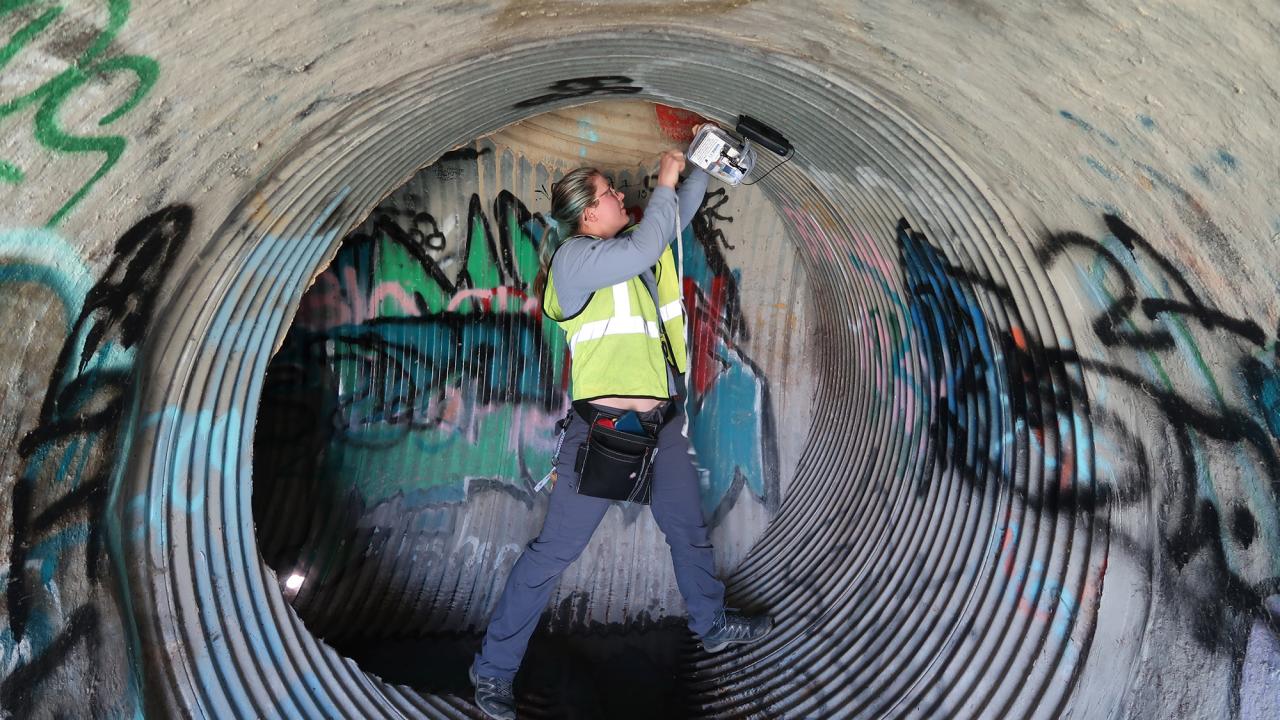Sage Madden holds a 2-inch baby bird in between the middle finger and thumb of her steady hand. Her other hand paints the bird’s tiny toenails blue — its identifying trait for the next few weeks. Red, white and purple are lined up for the next nestlings.
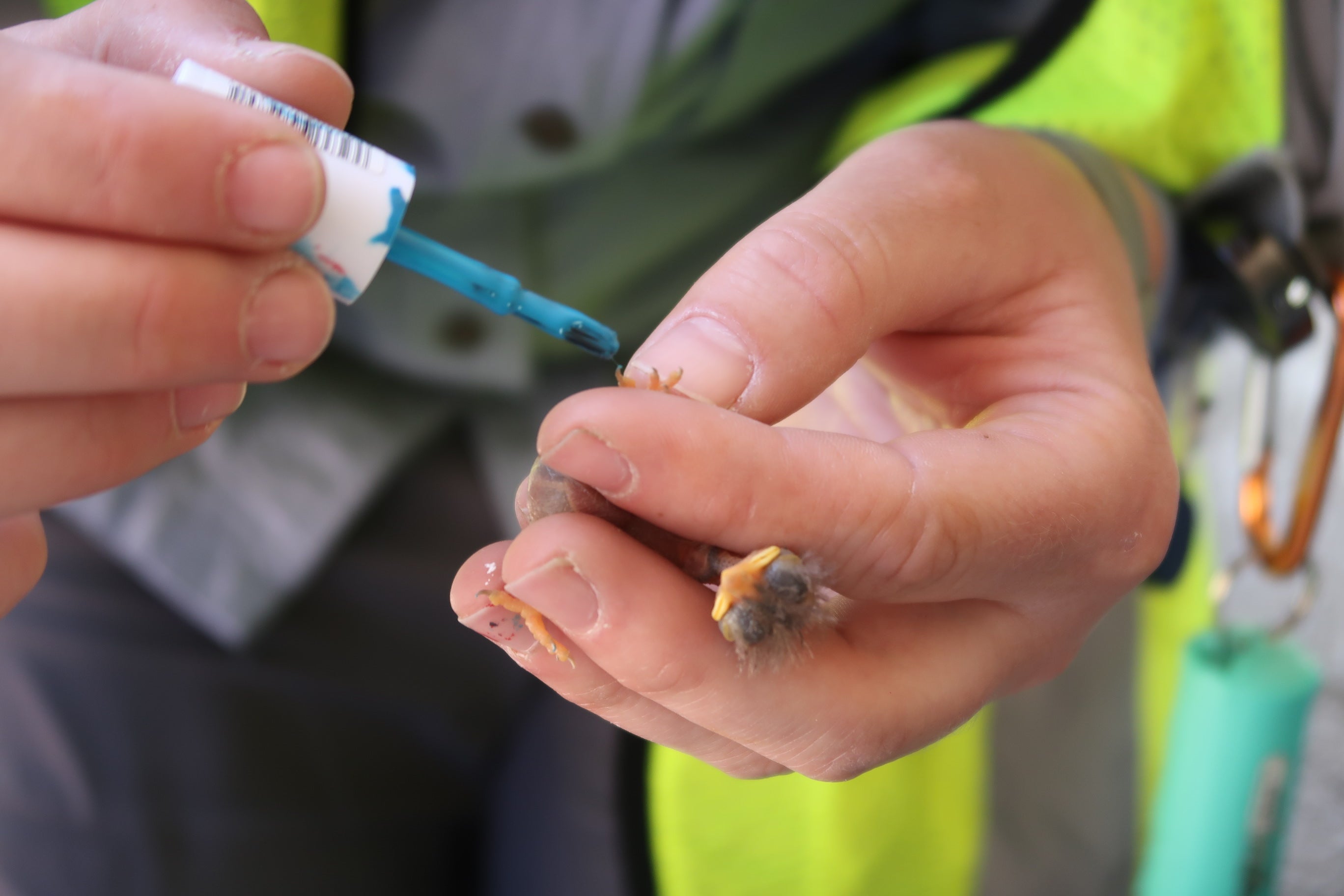
This baby bird spa day is an average day for Project Phoebe, a research project studying how birds cope in city environments by comparing black phoebes living in urban and natural areas. The project is designed by three UC Davis master's and Ph.D. students: Sage Madden, Jacob Johnson and Ian Haliburton, and supervised by Evolution and Ecology Professor Gail Patricelli and Neurobiology, Physiology and Behavior Professor Thomas Hahn.
“Project Phoebe is about understanding how animals adapt to us,” said Johnson, an animal behavior Ph.D. candidate. “We see them innovating and responding to an environment that they did not initially evolve to live with.”
On this Monday in May, the team captured and banded an adult mother on a Sacramento golf course, used mirrors attached to 20-foot poles to check nests in three parks, placed temperature loggers and cameras in a newly discovered nest, surveyed nest predators, and measured and painted the nails of four baby nestlings found within a graffiti-covered drainpipe.

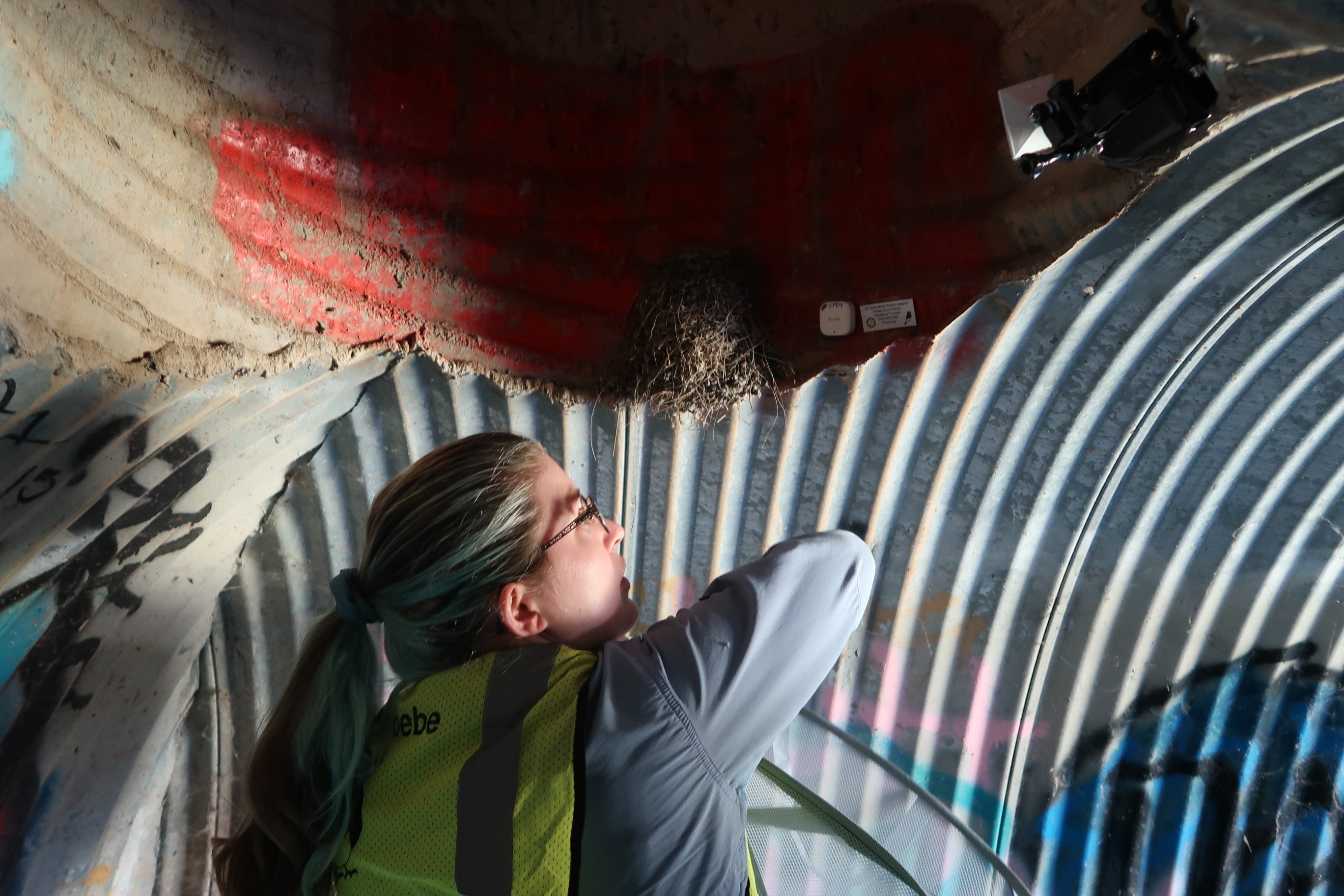
“There are phoebe nests in sewer grates and in the backs of pipes, and you can’t help but just look at those birds and go, ‘Clever girl,’” said Johnson. “They will always surprise me.”
A busy schedule
From 7 a.m. to 3 p.m., six days a week, the researchers collect as much data as possible. More than 10 individual projects are underway at once, and they all compare how black phoebes respond to urban versus non-urban areas.
In addition to recording data like bird aggression and nestling success, the team chronicles factors like area of concrete and surrounding human population density to create an “urbanization score.” This allows the team to discover the level of human presence that would potentially have large effects on the birds’ survival and reproduction.
“The plus side is we get to learn everything,” said Johnson, remarking on the past two years and the vast amounts of data collected in the team’s 30+ sites and 50+ active nests.
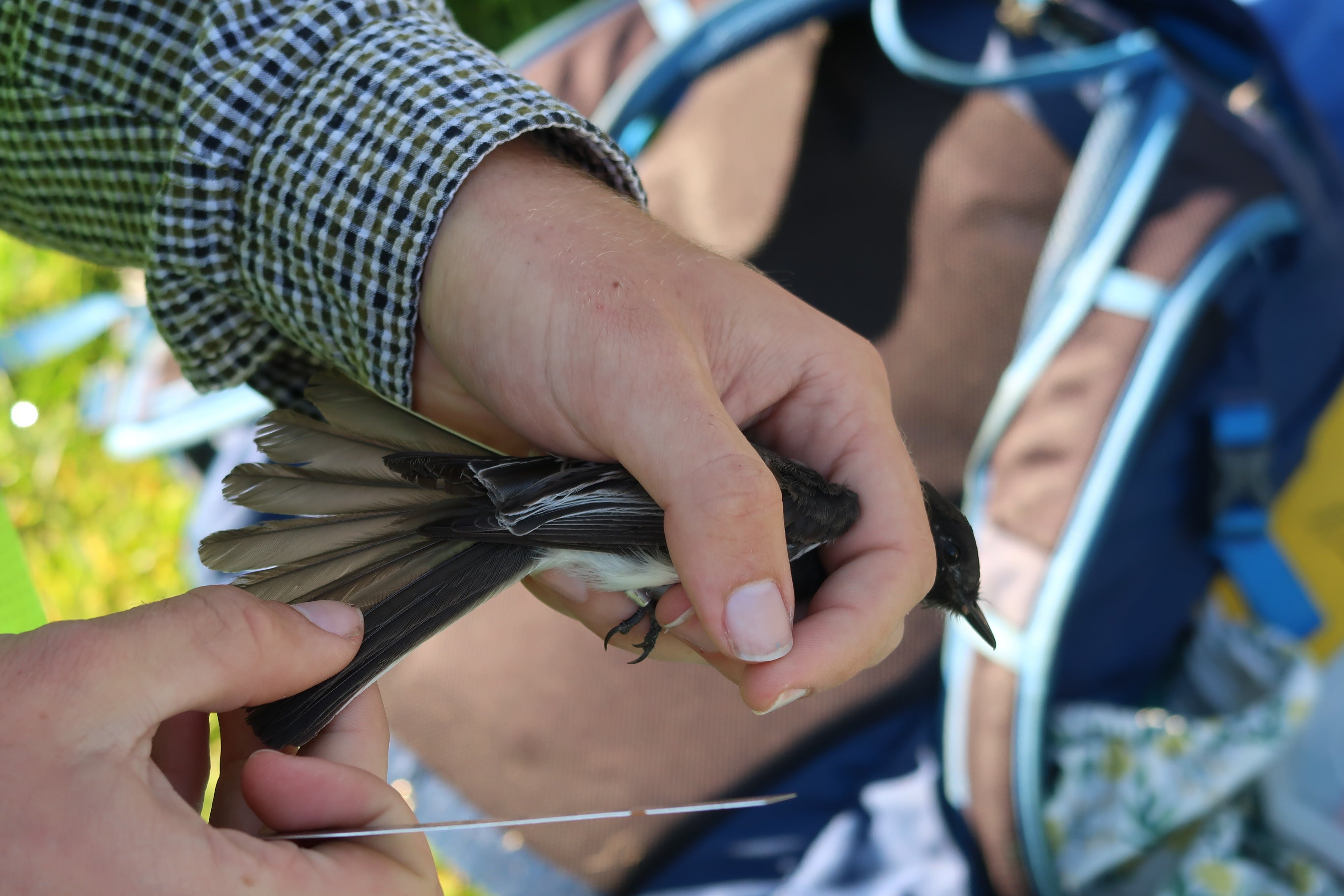
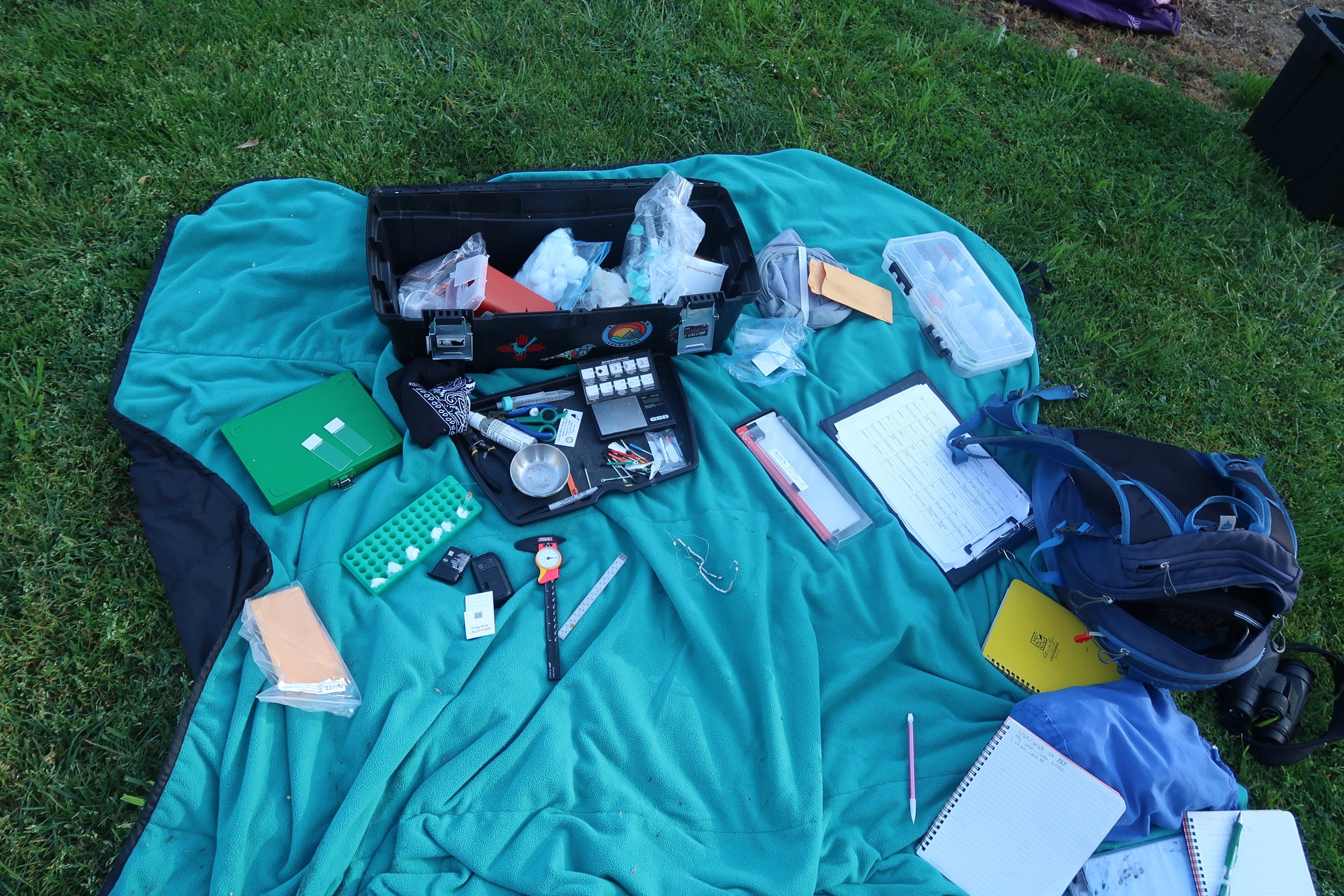
A bird-friendly design
As iconic backyard birds in Davis and Sacramento, black phoebes have done a remarkable job adapting to human influence, as seen with their unique nest placements.
“There is such a clear difference between the species that do well among humans, and the ones that don’t,” said Johnson. “Black phoebes have co-opted something that they evolved for in a different environment and translated that into our environment.”
Human development, or urbanization, impacts all species. For Project Phoebe, the tiny black and white bird is the model the team hopes to translate to other species.
“Over the next century, we will help decide which species manage to make it out of the ongoing climate crisis, and which species don't,” said Johnson. “It's so important to understand why species do or don’t do well with humans and how we can better coexist.”
The project aims to study why phoebes are successful, but also what barriers they still face.
“We could have what's called an ecological trap,” said Madden, project lead and an ecology Ph.D. student. “This is when an animal is attracted to a habitat that is actually bad for its success. This could be the case with black phoebes because cities provide so many different nesting sites that could be really attractive.”
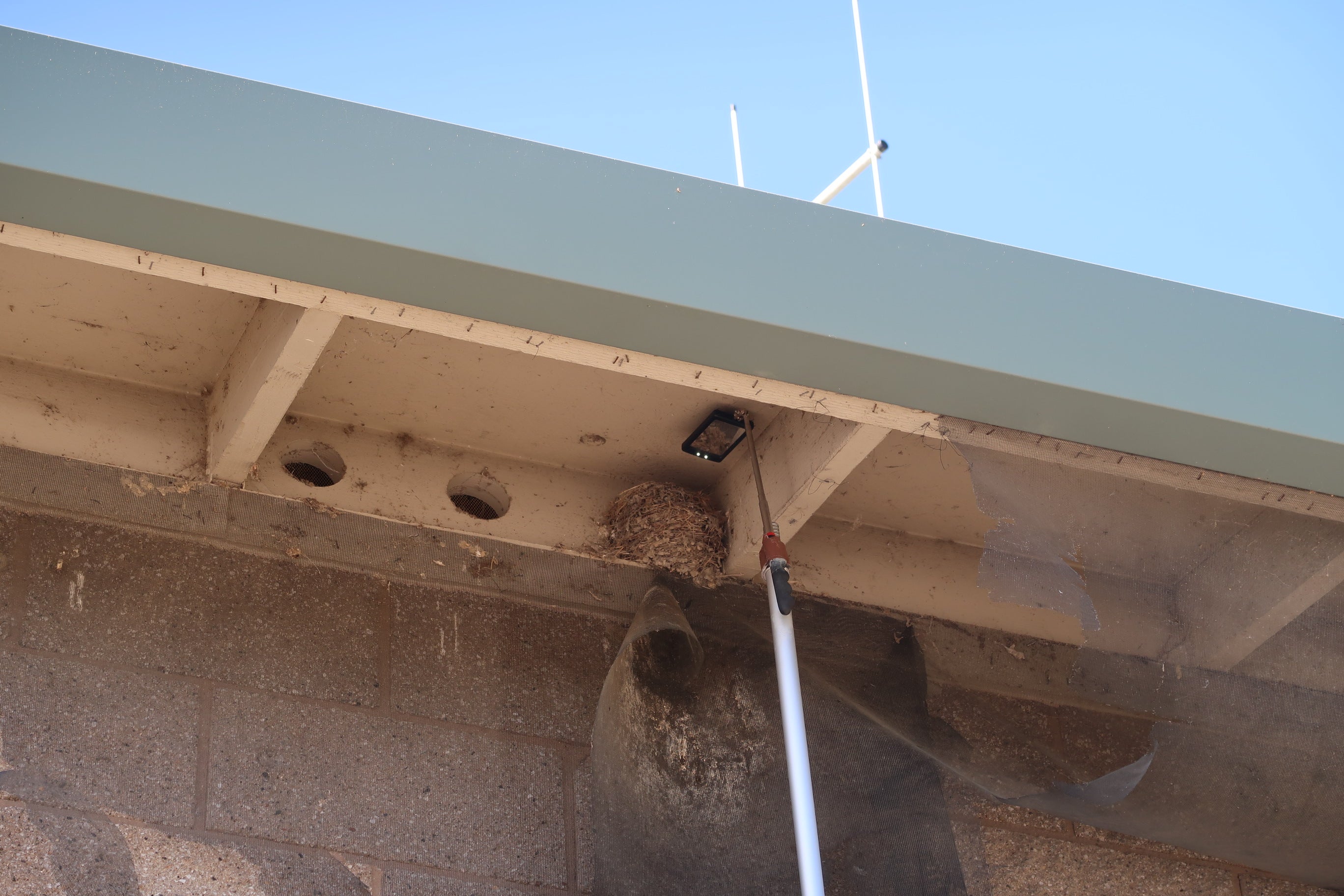
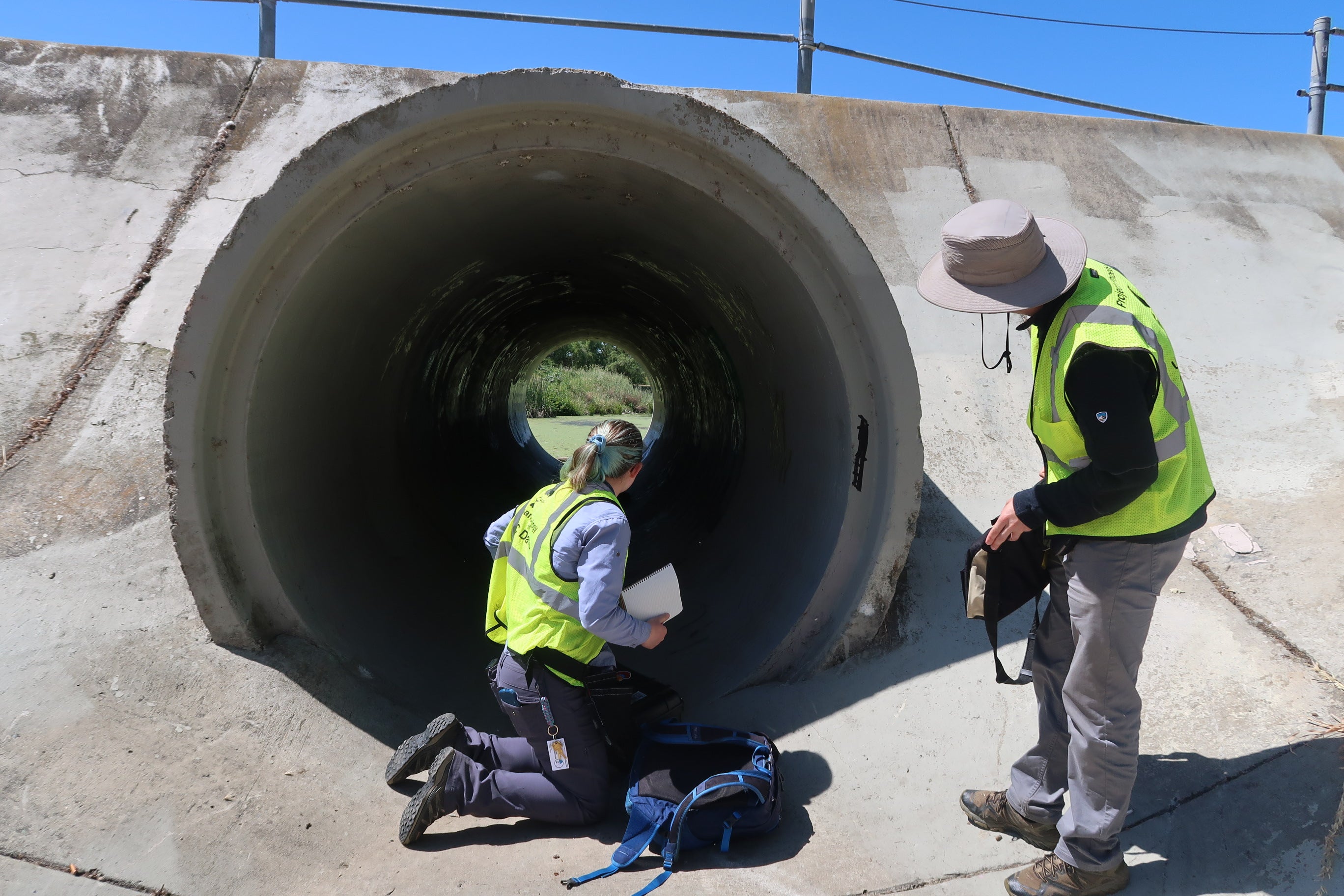
The team seeks to influence the way we design cities to accommodate as many species as possible. To do this, they need to know what factors are most detrimental to the bird’s success, whether that be heat, chemical pollution or a combination of everything.
“The design depends on the challenge,” said Madden. “If the challenge is heat, things like painting roofs white or increasing park tree canopy might be helpful. But if it’s noise or human activity instead, the intervention would be different.”
“Urban spaces are ecosystems,” said Haliburton, an animal behavior master's student. “These spaces can and should be able to do so much more than they’re currently doing for wildlife.”
Survival science
But what is most important for phoebe survival? The team’s preliminary findings suggest that phoebes do worse in urban environments, and they are trying to tease apart what is creating this comparative lack of success.
The heat might be the answer.
Madden is primarily focused on how phoebes respond to climate change-driven weather extremes, like heatwaves. Urban environments tend to be hotter than non-urban environments because of the high amounts of heat-absorbing concrete and buildings and a relative lack of green space. She said she wants to find out if urban heat affects phoebes and if they have different strategies to cope with it.
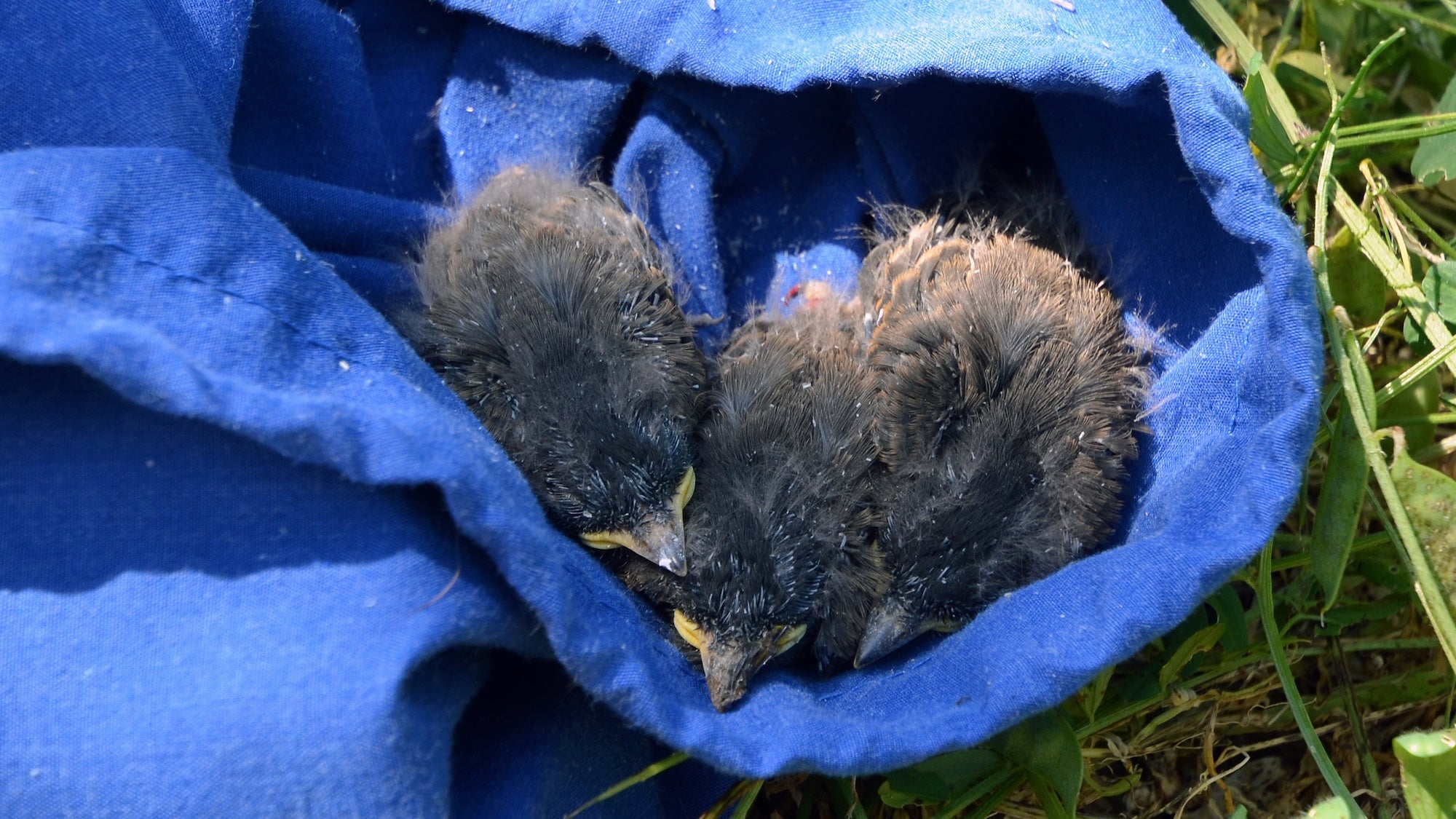
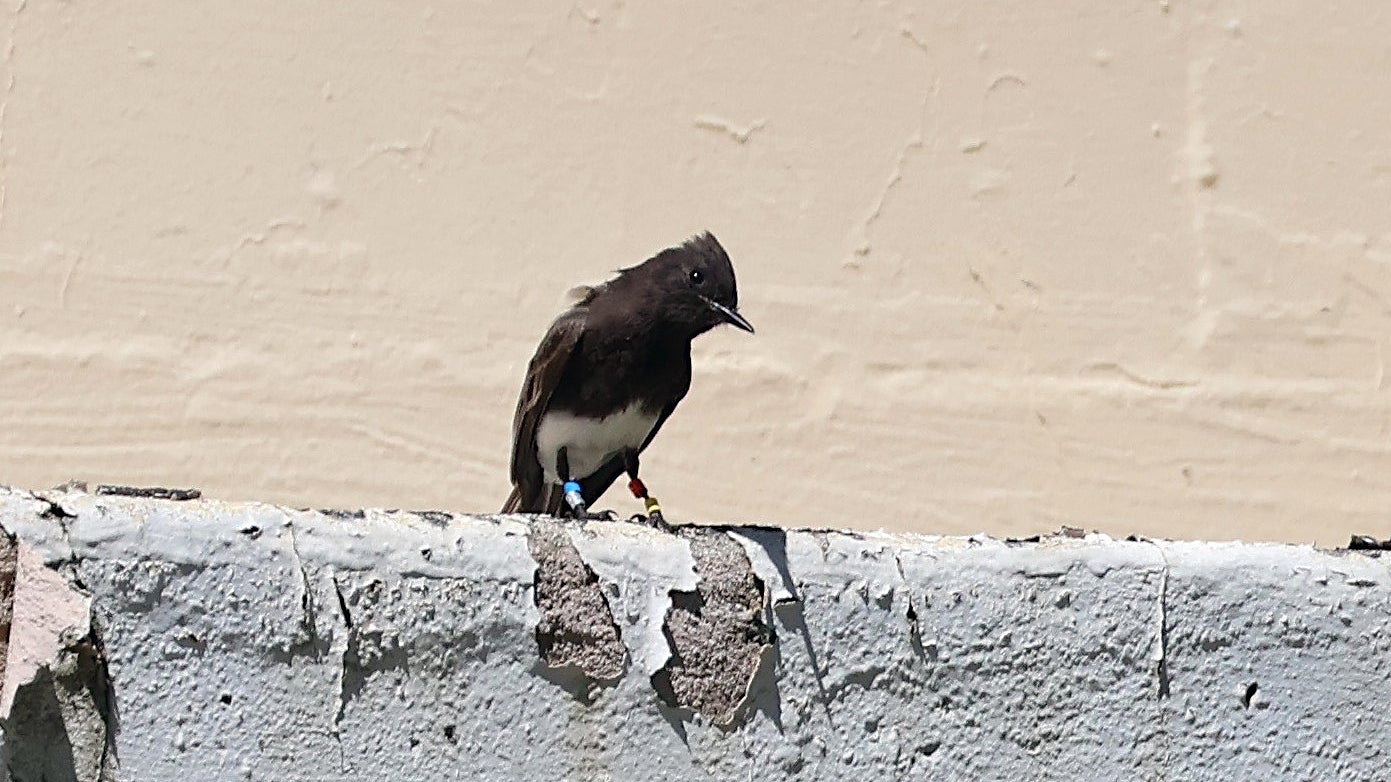
“Urbanization and temperature are highly correlated. So you need a lot of data to tease apart which one is driving the patterns you’re seeing,” said Madden.
Last year’s data suggested that urban areas are indeed hotter, and hotter nests result in fewer, smaller and less-developed nestlings compared to nestlings in cooler areas.
The lack of success could also be attributed to chemical pollution. Haliburton studies the impact of chemical pollution on phoebes. Superfund sites across Davis, Woodland and Sacramento provide good comparison points.
“Fledging success probability dropped off as you got into these more contaminated areas,” he said.
Or success could be determined by personality. Johnson is interested in how behavior impacts the ability to survive and reproduce. With the phoebes, he studies how behavior changes along the urban gradient.
“If you’re living in an urban area, is nesting space more limited?” he asked. “Do you need to be more aggressive? Is being more aggressive important for how many offspring you have? How do our personalities help us and hurt us in different ways?”
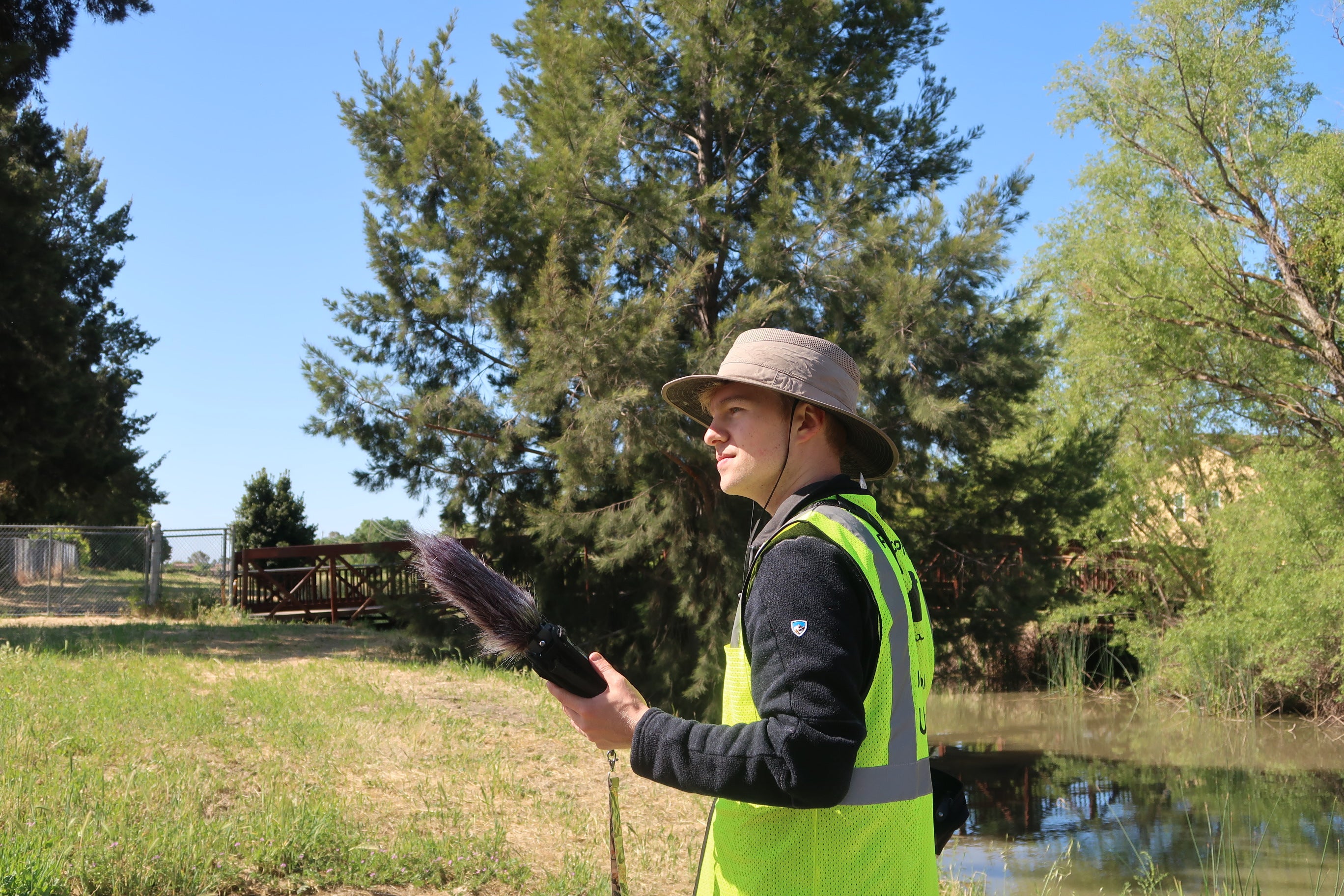
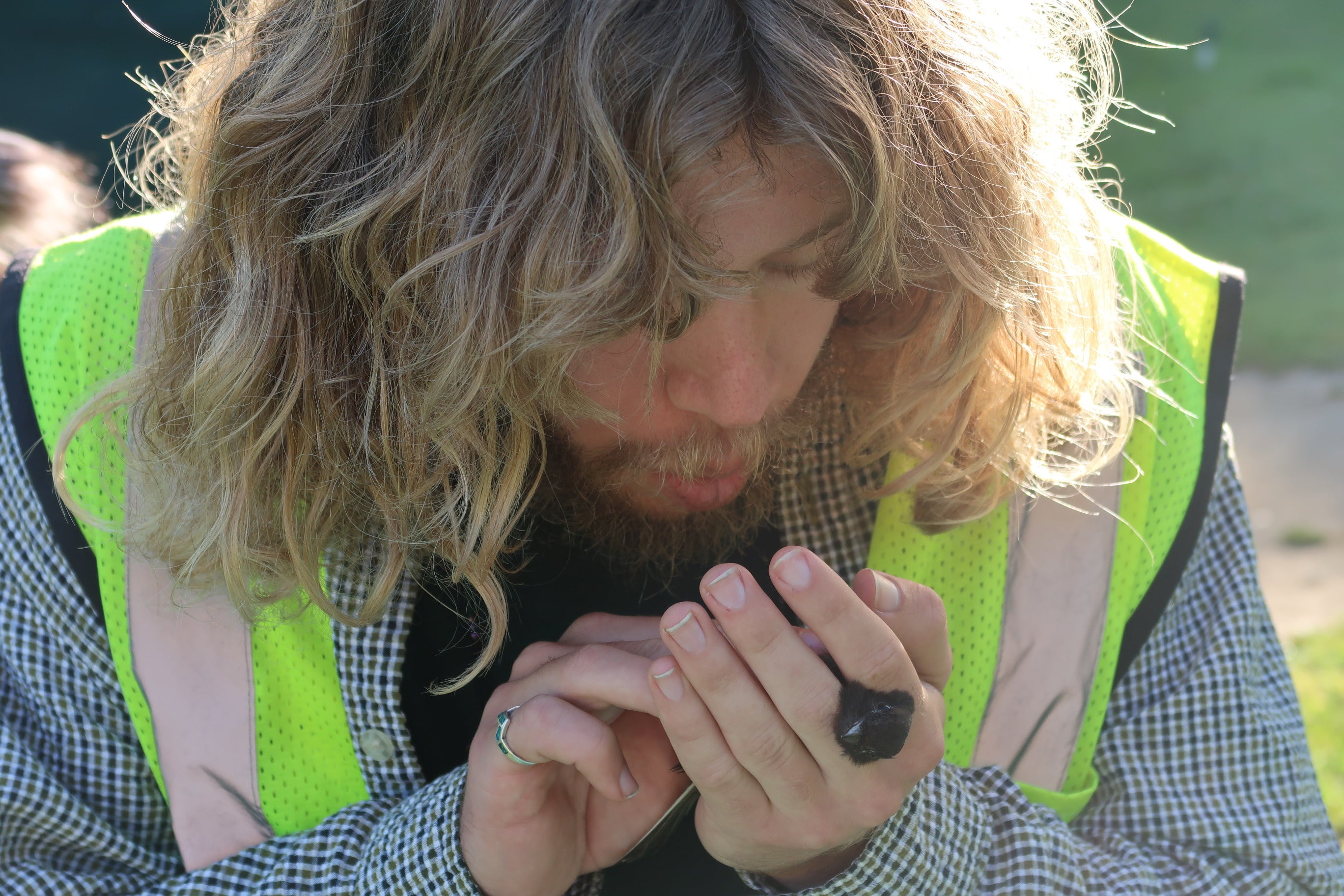
To do this, Johnson plays audio recordings of male phoebes and sees how local phoebes respond to a territory challenge. Originally, Johnson hypothesized that phoebes in cities would be more aggressive and competitive but is finding that urban phoebes respond less to the territorial calls.
“It’s the opposite of what I thought,” said Johnson. “Maybe the thing they were competing over in the first place is really not as big of a deal out here with so many places in cities to nest in.”
Supported by the community
Madden’s pride and joy of the project is more than just the phoebes. It’s the people.
“One of the coolest parts of this project is seeing other people get really excited about the process of doing science and learning something about birds,” said Madden. “It's really fun and rewarding.”
She said she especially loves working with undergraduate interns.
“As grad students, our research will be an incremental step toward learning something about birds in general,” said Madden. “But it’s a small step, while if you work with students, it’s a pretty big event in their lives that can have a huge impact on where they go after this.”
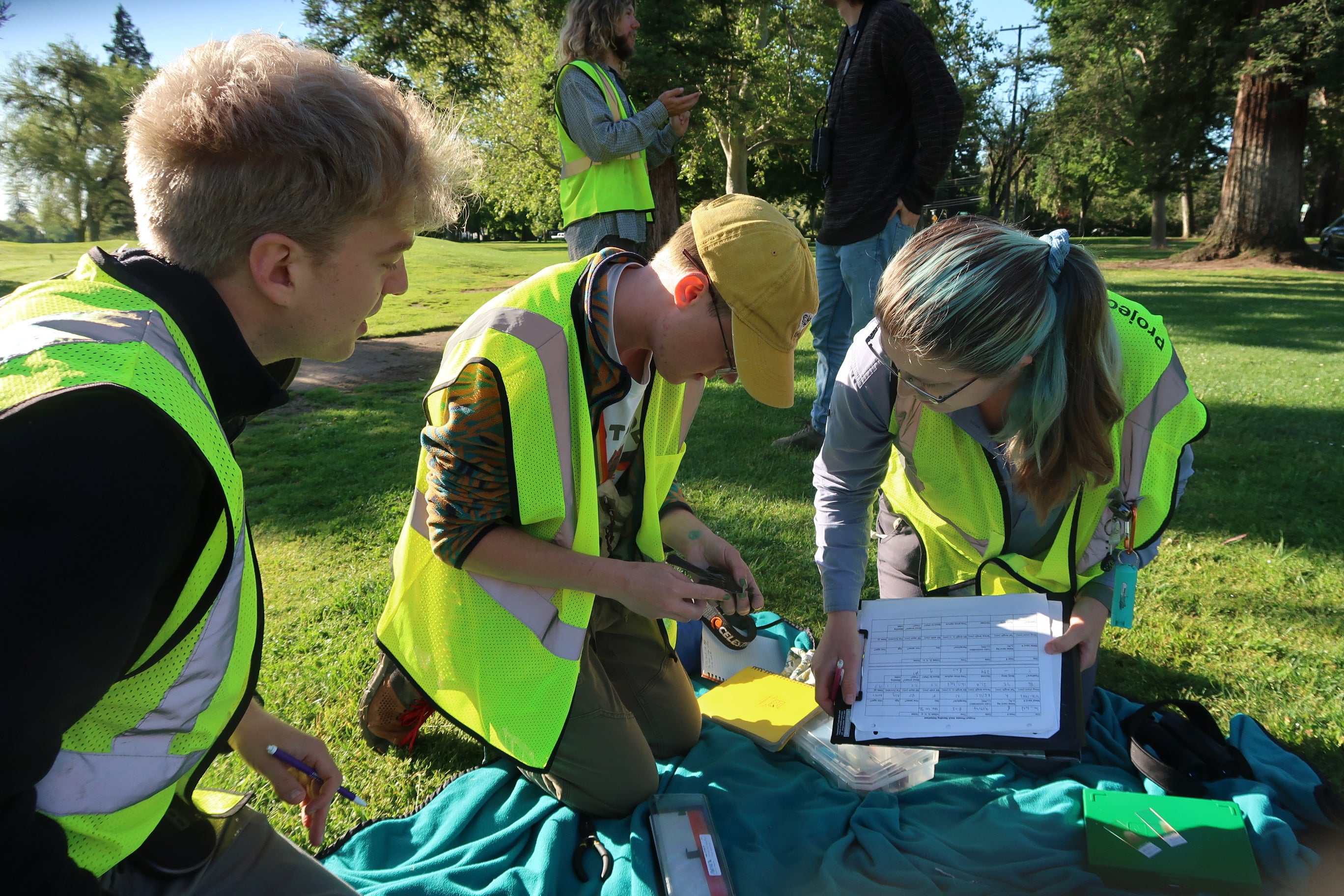
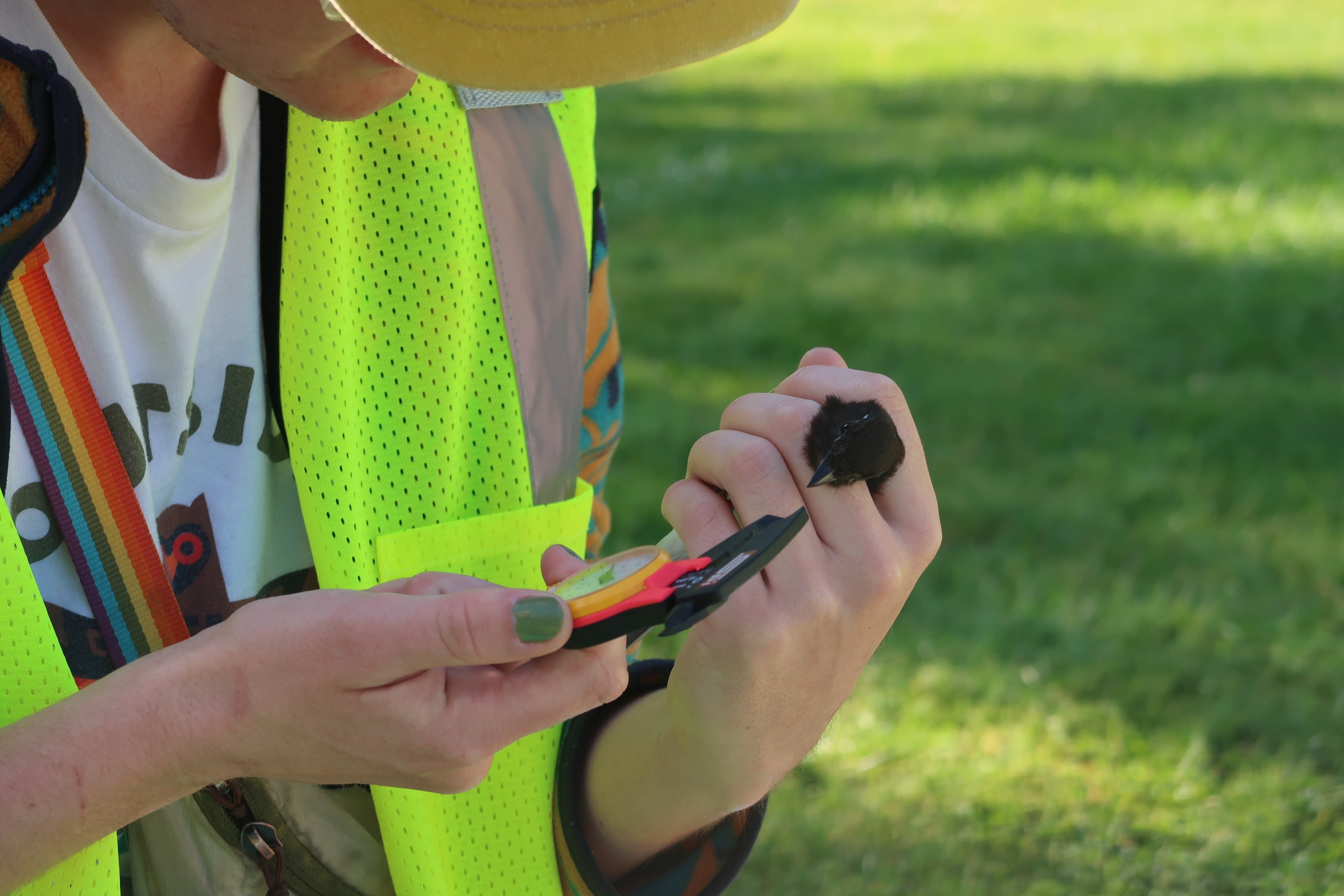
Undergraduates are also vital to the growth of the project. Seven of the 10 projects arose primarily from undergraduate questions. Their projects range from studying how singing behavior changes with background city noise, to how diet changes in cities impact beak shape, to how survival is correlated to how close the birds let humans get before flying away.
The Davis, Sacramento, West Sacramento and Woodland communities are also key to the project.
“The community has been critical to the success of this project,” said Madden. “Homeowners let us monitor nests on their houses; people report sightings of our banded birds; city and park managers help us get access to sites. Our work would simply not be possible without these peoples’ willingness to help and their generosity with their time.”
Some homeowners even report behaviors like nest predation to the team, information the team wouldn’t have been able to collect with a 20-minute nest visit.
“It’s so special to share a space with a nesting bird,” said Haliburton. "If you’re one of those people, you’re encouraged to reach out to Project Phoebe.”
Nature is all around us
“These birds are a great point of connection between people and nature in cities,” said Madden. “It can help create stronger connections to the natural world and a stronger desire to protect it, especially for people who may not have as much access to other natural spaces.”

Nature is everywhere, whether in a city or national park.
“The natural world is not a three-hour drive away at your national park,” said Johnson. “It’s everywhere. In your backyard. Underneath your feet. It is around you all the time.
“I think that's one feature that this project has always sought to show. The natural world is all around you. And we can not only study it, but we can measure it, and we can seek to understand it. Most importantly, we can see what these birds can teach us about bringing those relationships we have with nature ever closer to us.”
Malia Reiss is a science news intern with UC Davis Strategic Communications. She recently graduated in environmental science and management at UC Davis.
Media Resources
Kat Kerlin, UC Davis News and Media Relations, 530-750-9195, kekerlin@ucdavis.edu
